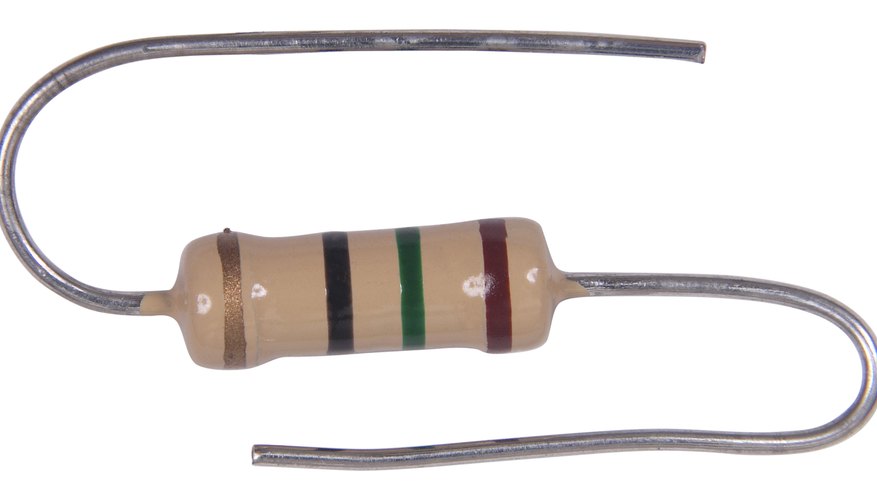Capacitors are passive electronic components that are used in many circuits to perform a wide variety of functions, from oscillators to power supply applications. One specific use of capacitors is in power line filtering in many appliances and electronic devices. Capacitors used in these applications are categorised as being either Class X or Class Y, and then rated by their tested voltage, such as X1 or Y2. These class designations refer to a capacitor's safety rating and application.
Capacitors As Line Filters
Electrical "noise" is a type of interference that is picked up by utility lines. The electricity that comes into your home is not always pure and clean. It can have occasional voltage spikes, that is, momentary times when the voltage surges or dips. This is common when there are instantaneous heavy current draws, such as if several air conditioners and your refrigerator all start to operate at the same time. Nearby lightning can induce voltage spikes, as can a car hitting a telephone pole or a squirrel shorting out the terminals on an electrical transformer. The electrical contacts on motors can send spurious voltage fluctuations back on the electric line. Other types of impurities in your electric line consist of radio frequencies, or RF interference, which can be caused by communications transmissions. Even some light dimmer switches will produce a noise component through the wiring in your home. Line filtering capacitors are used to reduce electrical and RF noise.
- Electrical "noise" is a type of interference that is picked up by utility lines.
- The electrical contacts on motors can send spurious voltage fluctuations back on the electric line.
Class X Capacitors
To "clean up" some of the electrical noise, radios, televisions and other electronic devices often employ a capacitor connected directly across the two AC lines once they attach inside the appliance. Capacitors performing this line-filtering task are classified as type "X." If an "across-the-line" type X capacitor fails, one of two things can happen. If the capacitor "opens," then it will be as if the capacitor is not there at all. This poses no danger to the user of the appliance, but may result in poorer performance. Should a type X capacitor "short," the short circuit would either blow a fuse in the appliance or your home's circuit breaker. Again, it would cause no risk to the user.
- To "clean up" some of the electrical noise, radios, televisions and other electronic devices often employ a capacitor connected directly across the two AC lines once they attach inside the appliance.
- Should a type X capacitor "short," the short circuit would either blow a fuse in the appliance or your home's circuit breaker.
Class Y Capacitors
One line filtering design places a capacitor between one of the AC lines coming in and the appliance's chassis. This "line-to-ground" configuration uses Class Y capacitors. Many appliances today have a ground lead that connects their chassis and metal cases to an electrical "ground" or neutral. Such appliances have three prongs on their plug that goes into a wall outlet. If your home is properly wired, the electrical plug is attached to a ground connection. There would be no hazard if a class Y capacitor "opens," but failure should it short will cause an electrical shock or even death to the user if the appliance is not properly grounded. The chassis or case would become "hot," that is, it would be at the electrical potential of the wall outlet.
- One line filtering design places a capacitor between one of the AC lines coming in and the appliance's chassis.
- Many appliances today have a ground lead that connects their chassis and metal cases to an electrical "ground" or neutral.
Safety Capacitor Ratings
In the United States, where the standard household voltage is about 120 volts, safety capacitors have a rating of 250 volts, more than double the expected operating voltage. However, capacitors can fail, either by being hit with a high voltage surge or due to old age, as they dry out and deteriorate.
X1, X2, Y1, & Y2 Classifications
Class X and Y capacitors are also given a number to represent their impulse test rating. The most common are X1 (tested to 4,000 volts), X2 (2,500 volts), Y1 (8,000 volts) and Y2 (5,000 volts).
